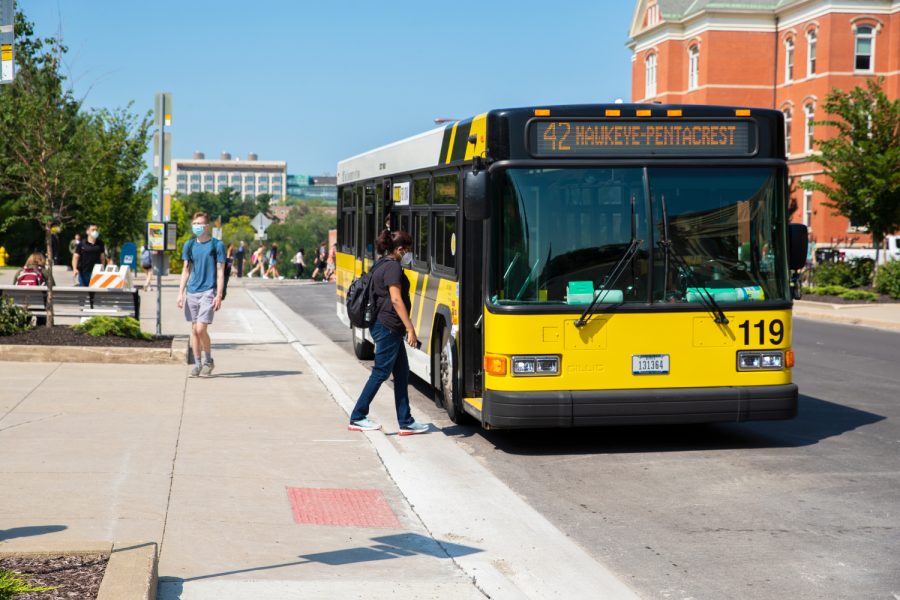Opinion | The increasing necessity of the Transit app
In a year with increasing gas prices forcing students to ride the bus on campus, the Transit app has become essential to students and their planning of activities throughout the day.
The Hawkeye-Pentacrest Cambus picks up a student at the Pentacrest on August 30, 2021
July 10, 2022
As gas prices continue their historic rise across the globe, many people are turning to other means to get around to the places they need to go.
From workers to regular denizens, people are turning to walking or carpooling to save money on gas. Many, including students on campus, are turning to buses as a way to get around.
With this in mind, apps like Transit have become very useful, and some other communities and towns would be well served to adopt it.
At Iowa, the CAMBUS has long been a way for students to get around campus. The CAMBUS used to have its own app, known as Bongo, developed internally by the University of Iowa’s Information Technology Services. Eventually, around 2019, Bongo was phased out by the externally developed Transit app.
The Transit app is not exclusively developed for Iowa. It is used in approximately 300 cities, campuses, and towns across the country.
The app is usually pretty effective for the most part. As long as the phone is connected to some form of Wi-Fi or cellular signal, chances are it is able to determine where the bus is and the timing of its arrival and departure. On rare occasions, it may be unable to fulfill these functions because of GPS errors.
However, while the app is quite useful and often quite efficient, it is not without the need for improvements. Some include more accurate wait times and improved functionality during busier periods and events.
The UI Department of Transportation said in an email that improvements are always happening for the Transit app and they have met with the Transit app team to provide feedback and improve the app.
Signs point to these improvements regarding aspects like functionality arriving at some point, but whether or not it’ll be fast enough to meet the demand is an open question.
Gas prices are fluctuating because of a large variety of circumstances and are not expected to come down anytime soon. The public transportation method of getting around campus seems likely to remain popular going forward.
With the rise of gas prices causing people to rely on public transport, apps like Transit have become very useful. If the few bugs could be ironed out and its service expanded to other communities, it would be very helpful in maintaining the efficiency and overall quality consistently going forward.
Columns reflect the opinions of the authors and are not necessarily those of the Editorial Board, The Daily Iowan, or other organizations in which the author may be involved.














